BMW K1
With Ian Falloon
Modern motorcycles are uniformly excellent and generally their style and design reflects a certain conformity. As a result most motorcycles of a particular type look remarkably similar, be it Adventure, Supersports, Naked or Touring.
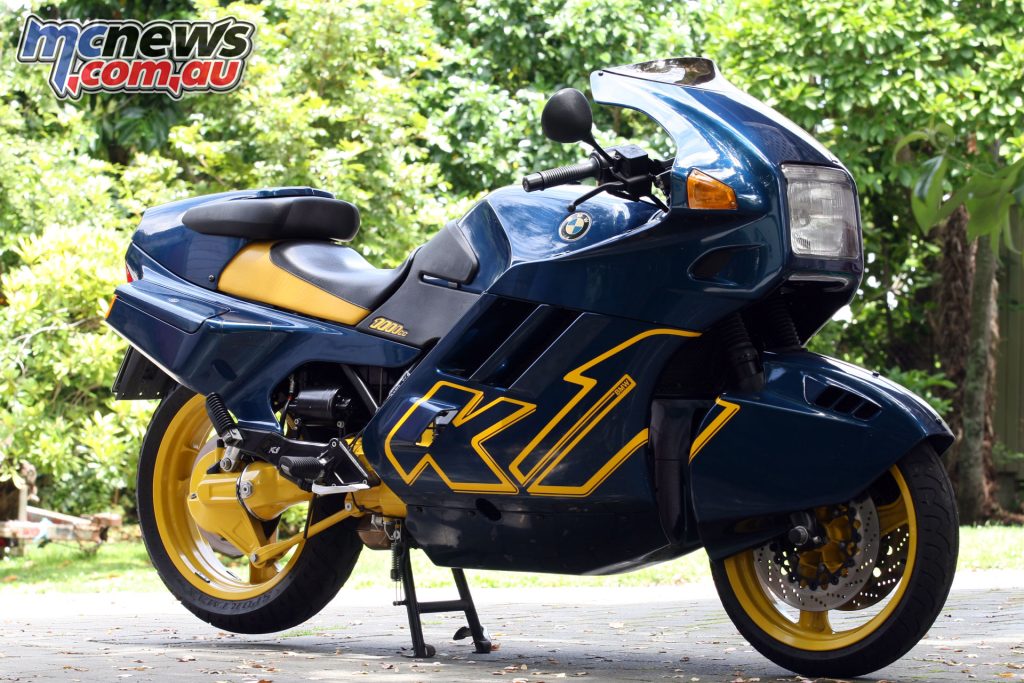
With developmental costs so high manufacturers nowadays are reluctant to take huge marketing risks but thirty-five years ago it was quite different. During the 1980s there was experimentation with 16-inch wheels, anti-dive brakes, turbochargers, unusual engine layouts and bold styling.
BMW was always a conservative manufacturer but they also chose an unusual path in 1983 with the four-cylinder K100. In the midst of this experimentation BMW decided the time was ripe for a shaft drive high performance Superbike, the K1.
Following the release of the K100 stylist Karl-Heinz Abe created a sports machine called “Racer’, for the Time Motion exhibition of 1984. This 1:2 scale model inspired the creation of the prototype K1, and it was presented to the BMW management on 22 June 1986.
The project was given the go-ahead and titled the K1 in the manner of BMW’s performance cars (M1, M3, M5, Z1 etc.). It was also intended to emulate the classic R90S that had provided unsurpassed performance in its day.
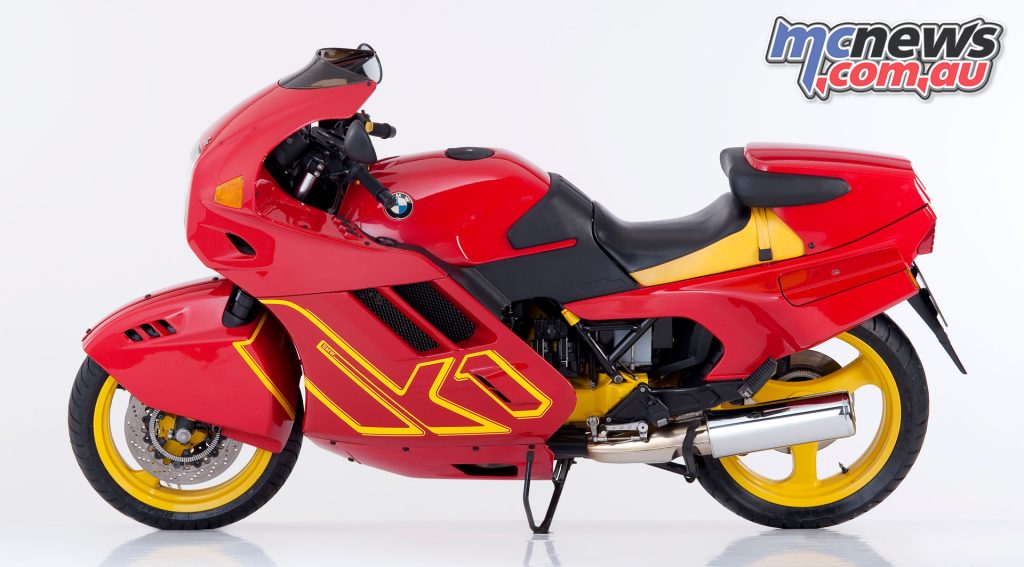
BMW wanted the K1 to stand out from the crowd, and when it was first displayed at the Cologne Show at the end of 1988, the K1 shattered the perception of BMW as a producer of boring touring motorcycles.
As BMW was committed to the voluntary 100 horsepower limit for motorcycles sold in Germany at the time they concentrated on improving aerodynamics to obtain high performance. The aerodynamic forerunner of the K1 was Ernst Henne’s 1937 world speed record-breaking 500 Kompressor.
This led to a number of streamlined record breaking motorcycles and sidecars during the 1950s. The K1’s large enveloping two-piece front mudguard almost mated the leading edges of the seven-piece fairing that joined to a large tail with miniature panniers.
The drag coefficient was a remarkable 0.34 with the rider prone, by far the lowest of any production motorcycle in 1988. The colour scheme of bright red or blue with yellow graphics and highlighting was bold, and almost bizarre. Totally unlike any other motorcycle, BMW certainly couldn’t be criticised for following the crowd.
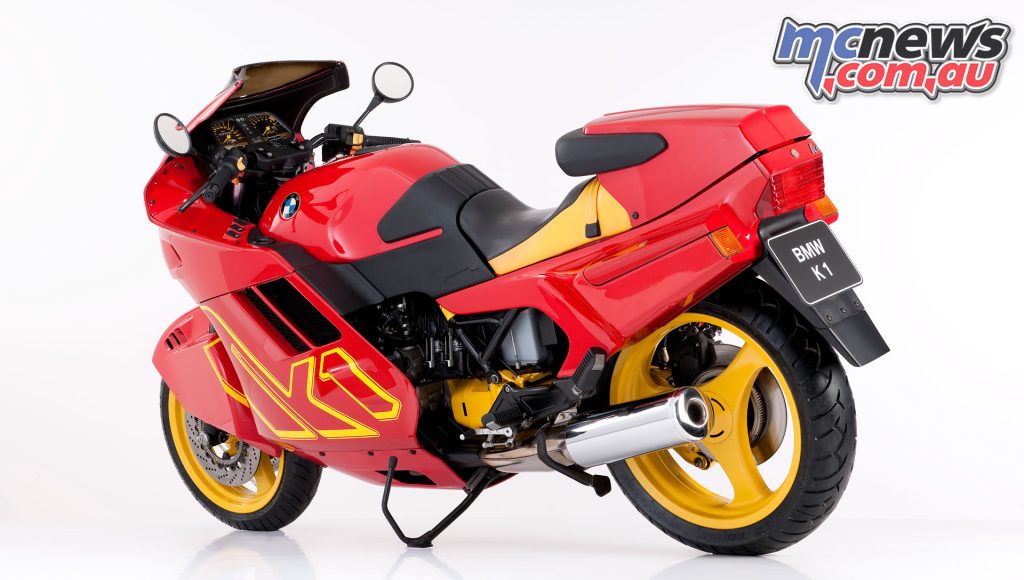
There was much more to the K1 than its aerodynamic bodywork. For the first time on a BMW motorcycle the cylinder head incorporated four valves per cylinder, the twin overhead camshafts acting directly on bucket tappets without adjustment shims.
The four-cylinder engine retained the K100’s dimensions of 67×70 mm, but the engine management system was a digital Motronic, similar to those on BMW cars. The power was right on 100 horsepower, produced at a moderate 8,000 rpm.
The chassis components were also quite radical for a BMW street bike in the 1980s. The tubular steel frame was much stronger than the K100, and the wide 17-inch wheels were shod with low profile with radial tyres.
Complementing the wheels and tyres were upgraded suspension and brakes, the K1 using the Paralever swingarm from the dual-purpose GS models, with a single gas-charged Bilstein shock absorber. As the swingarm incorporated an additional U-joint, the wheelbase stretched out to a cumbersome 1,565 mm.
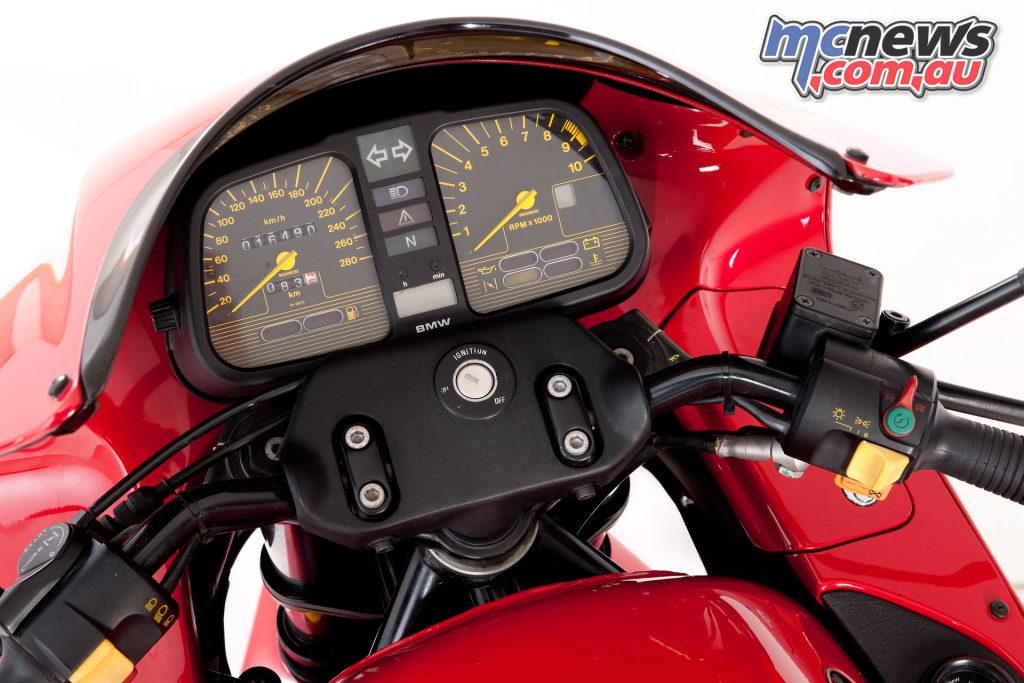
Italian components abounded, the front 41.7 mm fork from Marzocchi, the wheels FPS, and the brakes Brembo. Four-piston calipers gripped the twin floating spirally drilled 305 mm front brake discs and ABS was optional. It all added up to an impressive specification, on paper at least.
The K1 was designed for high-speed use, and the uncompromised riding position accentuated this. But with a dry weight of 234 kg the K1 failed in its quest to offer leading Superbike performance.
The engine, while providing a superb broad powerband with excellent fuel economy, just wasn’t powerful enough to overcome this weight obstacle. And although the Paralever provided a vast improvement in overcoming the inherent deficiencies of shaft drive on a sporting motorcycle, it still couldn’t disguise the considerable unsprung weight.
Despite these deficiencies the K1 was the best handling and strongest performing BMW motorcycle to date. More suited to high-speed long distance riding than outright sports use the K1 remains a formidable machine in this context.
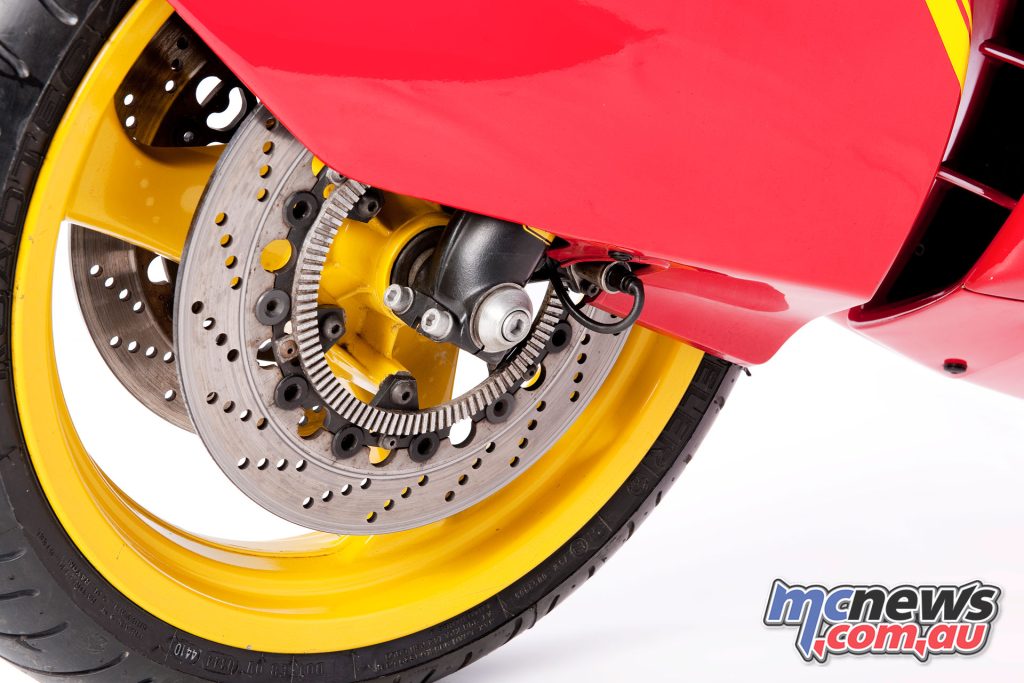
The first deliveries of the K1 were in May 1989, and it was initially popular, winning many industry awards. 4,000 were built during 1989. The radical styling wasn’t a total success so the colours were toned down for 1991, with a more subdued classic black metallic, with silver wheels.
Even this couldn’t save the K1 and by the end of 1993 it was dead. after which sales stalled and it finished with a total production of less than 7,000.
Today the K1 remains an important symbol of BMW’s increasing technological status that emerged during the 1980s. Many of its features were landmark at the time and have become the norm.
The K1 also represents the end of an era, one before the onset of sophisticated marketing surveys where bold and brave designs were created without knowing if they would be successful. Because it is so unique, for those who know and can appreciate it for what it is the K1 is now increasingly sought after as a future classic.
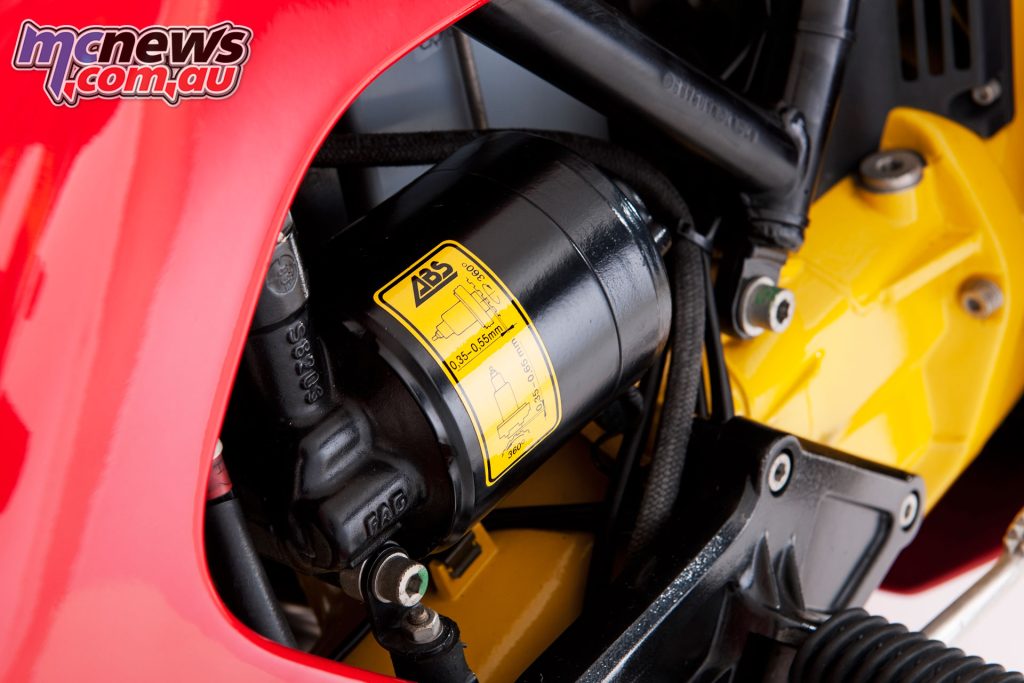
BMW K1 Specifications
| BMW K1 Specifications | |
| Engine | 987 cc liquid-cooled longitudinal four-cylinder, DOHC, four valves per cylinder, Bosch electronic fuel injection |
| Ignition | Hy Computer-controlled digital with three-dimensional mapping |
| Bore x stroke | 67 mm × 70 mm |
| Compression ratio | 11.0:1 |
| Power | 100 hp (75 kW) @ 8000 rpm |
| Torque | 74 lb⋅ft (100 Nm) @ 6750 rpm |
| Transmission | Close-ratio five-speed; Shaft drive |
| Brakes | Twin 305 mm disc with four-piston Brembo callipers (F), Single 285 mm disc (R), Optional ABS |
| Wheelbase | 1565 mm |
| Dimensions | 2160 mm |
| Width | 720 mm |
| Height | 1170 mm |
| Seat height | 780 mm |
| Weight | 234 kg (dry) |
| Fuel capacity | 22 L |























